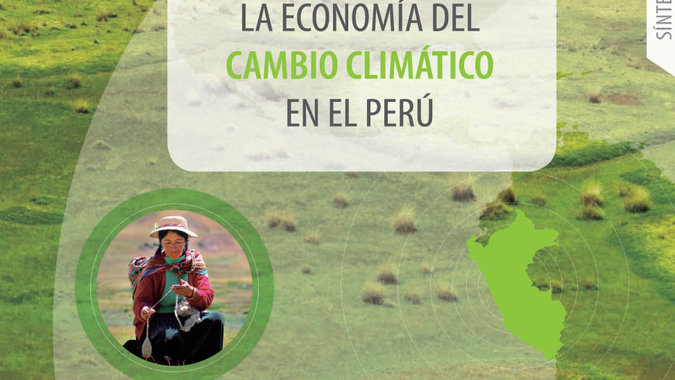Climate Change in Peru Seen Affecting the Fishing, High Andes’ Livestock and Agricultural Sectors the Most
Work area(s)
Topic(s)
By the year 2100, the economic losses related to this phenomenon could range between 11.4% and 15.4% of national GDP.

(December 10, 2014) Fishing, livestock in the high Andes and agriculture are the sectors forecast to be the most affected by climate change in Peru in the coming years, although hydroelectric power, mining, tourism, health and infrastructure could also suffer negative impacts, according to a new joint study by the Peruvian government, the Economic Commission for Latin America and the Caribbean (ECLAC) and the Inter-American Development Bank (IDB).
The report The Economics of Climate Change in Peru, presented in Lima in the framework of the Conference of the Parties to the United Nations Framework Convention on Climate Change (COP 20), shows that by the year 2100 the projected impacts would translate into losses to the national economy that fluctuate between 11.4% and 15.4% of the Gross Domestic Product (GDP) from 2010 (the base year used in this research).
More specifically, the study explains that the impact in the Peruvian fishing sector is concentrated in a decline in anchovies, which would affect the production of fish meal. This implies that by the end of the century the losses would be around 30 times the size of the sector’s current gross domestic product.
The hydroelectric power sector will suffer impacts due to the reduced availability of water, a situation that will also affect mining projects. Due to the expansion of agricultural areas, there will be less water available for hydroelectric generation, which will translate into a decline in accumulated earnings of between 3.3% and 5.0% of the sector’s GDP.
The agricultural sector could face losses equivalent to between 23.9% and 33.1% of the sector’s GDP during the period 2010-2100 in the scenarios assessed in the report. This would stem from reduced productivity among nearly all of the crops selected (potatoes, rice, hard yellow corn, sugar cane, banana and starchy corn); coffee productivity would show small rises at the beginning of the period, but this would decline later.
With regard to mining, an accumulated reduction of 15% of the sector’s GDP is expected over the entire period in one of the scenarios evaluated in the study (A2), with 5% in the A1B scenario and 11% in the B1 scenario. The results for livestock production in the high Andes show that the impacts would stem from a reduction in pasturelands and the expansion of the agricultural sector, which could lead to a maximum accumulated loss of 90% of the sector’s GDP.
In terms of tourism, the increased number of extreme climate events could prompt a decrease in the number of tourists who visit one of the country’s main attractions: Machu Picchu. The losses by 2100 at that site are estimated at between 15% and 30% of the sector’s GDP.
Meanwhile, the impact of climate change on Peru’s roadway infrastructure would spur additional public spending of about 2.8% of the transportation GDP from the year 2010, since higher costs would be expected due to greater repairs and maintenance related to more frequent roadway flooding. In terms of health, the public sector would increase the resources earmarked for treating malaria, which would require a spending rise of 0.02% of the 2010 national GDP.
The study underscores that Peru is considered to be highly vulnerable to climate change because it has seven of the nine characteristics of vulnerability identified in the United Nations Framework Convention on Climate Change: it has low coastal areas, arid and semi-arid areas, zones that are susceptible to deforestation or erosion, to natural disasters, to drought and desertification, highly polluted urban areas, and fragile ecosystems.
Given the magnitude of the losses under analysis, the report stresses the need to take action as soon as possible to reduce vulnerabilities throughout the country’s territory. The suitable, timely design of strategies, policies and programs for adaptation is fundamental to counteracting the potential negative effects of climate change. The report also recommends expanding the information available, analyzing the sectors that were not assessed and studying the social implications—as key elements to designing policies for sustainable development.
More information:
For queries and interviews, please contact María Amparo Lasso, Chief of ECLAC's Public Information Unit.
E-mails: mariaamparo.lasso@cepal.org, prensa@cepal.org; Telephone: (56 2) 2210 2040.
Related content
Country(ies)
-
Peru
Contact
Public Information Unit
- prensa@cepal.org
- (56 2) 2210 2040
María Amparo Lasso, Chief Public Information Unit
- mariaamparo.lasso@cepal.org